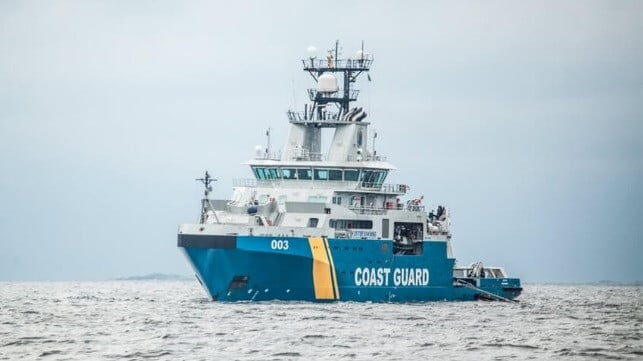EU Moves to Enhance Undersea Cable Security as Sweden Looks at New Incident

Swedish authorities confirmed this morning, February 21, that they have launched an investigation into newly discovered damage on another undersea Baltic transmission cable. News of the investigation came as the European Commission’s Executive Committee mapped out new steps to protect critical infrastructure including calling for enforcing sanctions against the shadow fleet.
Few details have been provided on the latest incident other than a brief statement from the Swedish Police saying they were investigating “a suspected cable break in the Baltic Sea within the Swedish economic zone. The preliminary investigation into suspected sabotage was initiated so that the police can have access to the tools needed to clarify what happened and whether it is a new or old injury.”
The Swedish Coast Guard confirmed that its patrol boat KBV 003 is on its way to east of Gotland. According to the media reports, the cable runs past Gotland and through the Swedish zone while connecting Finland to Germany.
Separately, Cinia Communications, the Finish state majority-owned company, issued a brief statement reporting, “Some disturbance has been detected on the C-Lion1 submarine cable between Finland and Germany.” This would be the third incident involving the same cable which was damaged in November and December 2024. Cinia, however, is reporting today “The disturbance does not affect the functionality of telecommunications connections running in the cable and the data traffic continues flowing normally.” The company however has submitted a request for investigation to Finland’s National Bureau of Investigation (NBI).
“No realm of life is free from threats or hostile behavior today,” said Kaja Kallas, High Representative for Foreign Affairs and Security Policy/Vice-President of the European Commission reporting the planned actions by the EC High Representatives. “Today we are taking steps to protect cables, detect and anticipate threats more quickly, and repair damage as fast as possible. We should mobilize all our strengths, military and civil capacities to ensure surveillance and attribute attacks quicker, sanctioning those responsible of sabotage. Would-be perpetrators must also be deterred.”
The Joint Communication issued after the meeting in Helsinki maps out specific actions that they said will be progressively rolled out in 2025 and 2026. This comes in addition to the current efforts by member states and NATO to increase monitoring in the Baltic. The High Representative body said the steps being introduced are a range of measures to bolster the resilience of this critical infrastructure, address prevention, detection, response, recovery, and deterrence.
Forcing on the deterrence aspect, the plan calls for “Enforcing sanctions and diplomatic measures against hostile actors and the ‘shadow fleet', making full use of the Hybrid Toolbox to address hybrid campaigns.”
Prevention will include stepping up security requirements and risk assessments on submarine cables while the body is calling for funding the development of new and smart cables, allowing for redundancies and enhancing resilience. They want to enhance threat-monitoring capabilities and improve the efficiency of response and recovery efforts.
By the end of 2025, the Commission and the High Representative are expected to present, amongst other actions, the mapping of existing and planned submarine cable infrastructures, a Coordinated Risk Assessment on submarine cables, a Cable Security Toolbox of mitigating measures, and a priority list of Cable Projects of European Interest.
